“Being an artisan is like exploring new worlds…”: Paolo Penko in Florence.
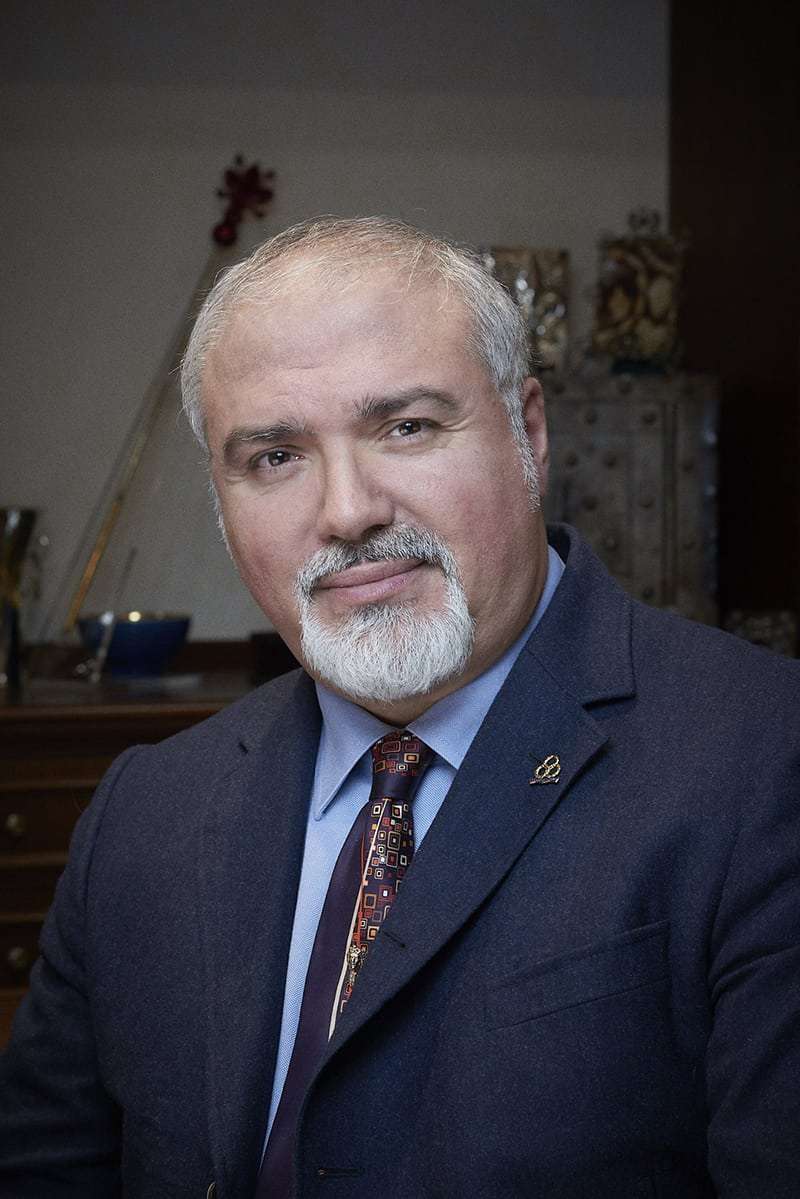
Paolo Penko, a hidden Jewel in Renaissance Florence. Paolo’s family was originally from Hungary and settled in Tuscany around the mid-1700s. They arrived just after the Hapsburg-Lorraine government came to power in Tuscany after centuries of Medici Family rule. Paolo is the Deus ex Machina behind the Paolo Penko goldsmith workshop in the city center.
The city of Florence is the primary source of inspiration for his creations which incarnate the motifs that are present in Florentine architecture. Motifs that came from the Cathedral of Santa Maria del Fiore and Santa Maria Novella Church. The inspiration also came from the Medici and Strozzi Palaces which are perfect examples of Renaissance private constructions.
Penko’s passion for sacred art made him one of the founders and also a teacher at the Sacred Art School of Florence which promotes creativity in art and craftsmanship.
Some of his works are on display at the Bargello National Museum and at Palazzo Pitti in Florence.
On June 23, 2019, he received the “Gold Florin” of the city of Florence, the highest Florentine honor, awarded every year by the municipal administration to personalities and organizations that have distinguished themselves in their commitment and love for the city and Italian jewelry.
Table of Contents
Being an Artisan in Florence: what does it Mean?
“Being an artisan today means being aware of accepting a great challenge.
My work can be compared to undertaking a long journey and an adventure. It’s like exploring new worlds: being creative by using my imagination without losing the roots, that is the sense of my work and that is the core of the Italian genius.
But craftsmanship can never rest; it must know how to constantly renew itself and how to adapt to the present world. This is the workshop of the third millennium.
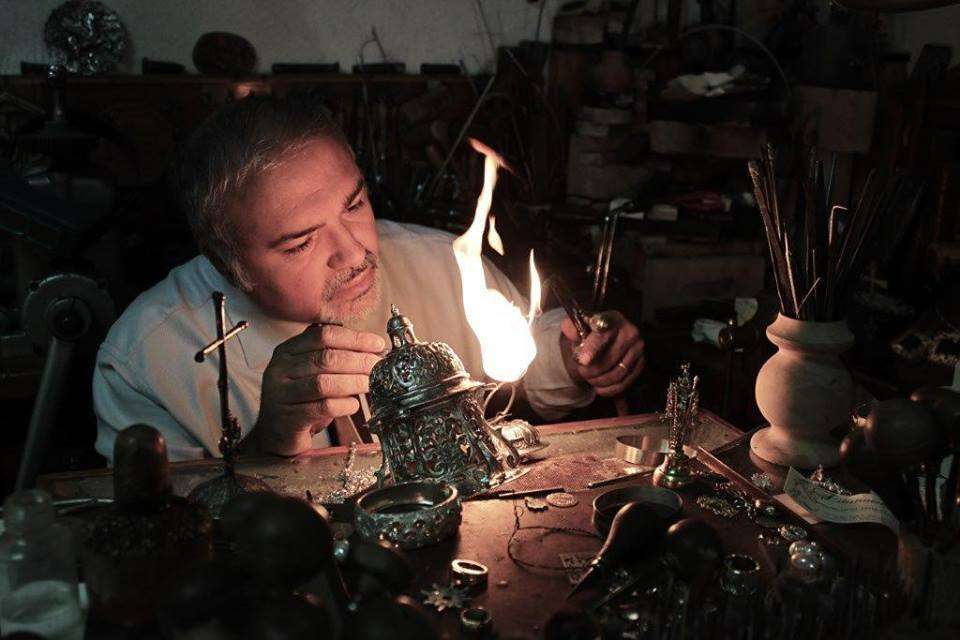
Florence is the place where this can happen, a perfect synthesis between art, culture, and human capacity. Here is like art and craftsmanship would merge…and it’s exactly what happens!” (Paolo Penko)
Penko “Bottega Orafa”
The Penko Bottega Orafa consists of two workshops located in the heart of Florence, a stone’s throw from the Duomo.
The team includes Paolo Penko, his wife Beatrice, their sons Alessandro and Riccardo, and last, but not least, their puppy named “Fiorino”, the real Mascotte of the Duomo Store.
They create unique jewelry according to the ancient techniques of the Florentine Goldsmith tradition. In fact, after so many centuries they are still using the same techniques.
The Penko family creates “timeless jewelry”, with a classical taste but at the same time, with a strong innovative imprint, always adapting to contemporary taste.
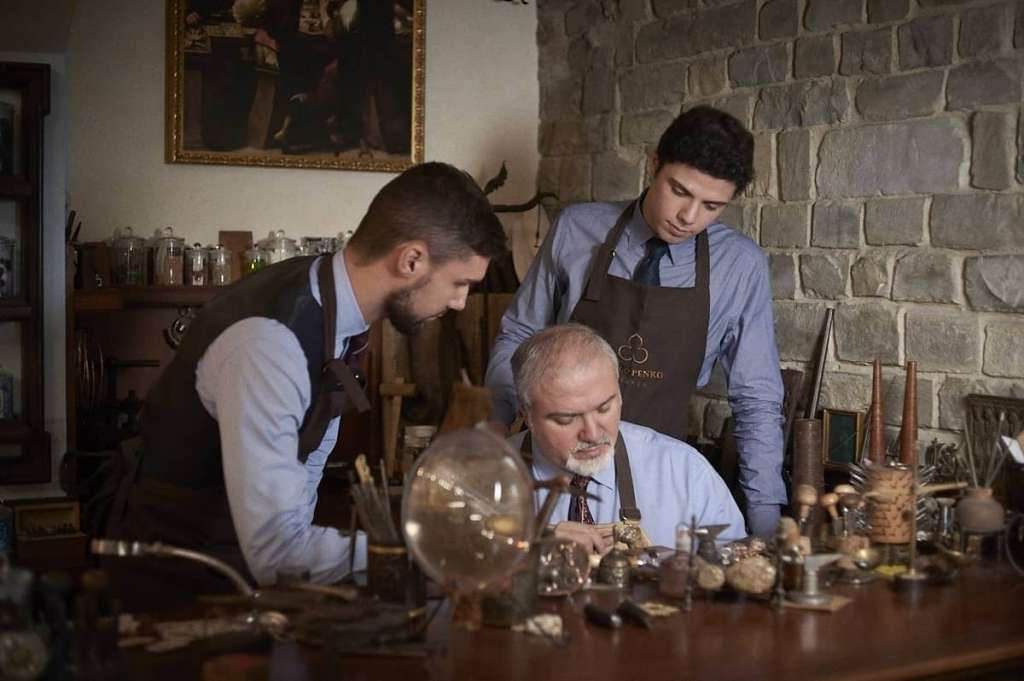
Paolo Penko’s unique creations
Paolo Penko’s unique creations are perfectly crafted, from the initial design to the realization of the jewel. These jewels are inspired not only by the spirit and style of the artists of the past but also by contemporary originality and sensitivity.
Paolo created a line of jewels dedicated to Leon Battista Alberti and one dedicated to Sandro Botticelli’s masterpieces such as “La Primavera”. He also made a pendant inspired by the rose window of Santa Maria del Fiore and another dedicated to Galileo Galilei.
Wedding Rings: “To each couple their own wedding rings”
Wedding rings play a prominent role in marriage and the exchanging of rings is one of the most important moments in the ceremony as they are the symbol sanctifying the union between two people.
Paolo is specialized in making exquisite personalized and exclusive wedding rings in various shades of gold and worked with the numerous techniques of the Florentine goldsmith’s tradition to meet the needs of the bride and groom.
The Gold Florin
In 1252 the Florentine Mint coined The Gold Florin. It would become a symbol of its economic power.
Florence needed its own currency due to the ambition to become one of the most important and influential economic and commercial powers in Europe.
Paolo Penko makes reproduction of the Gold Florin in different materials, from 18Kt gold to silver, to gilded bronze; the Florin is applied on a number of jewels, from rings to earrings to cufflinks.
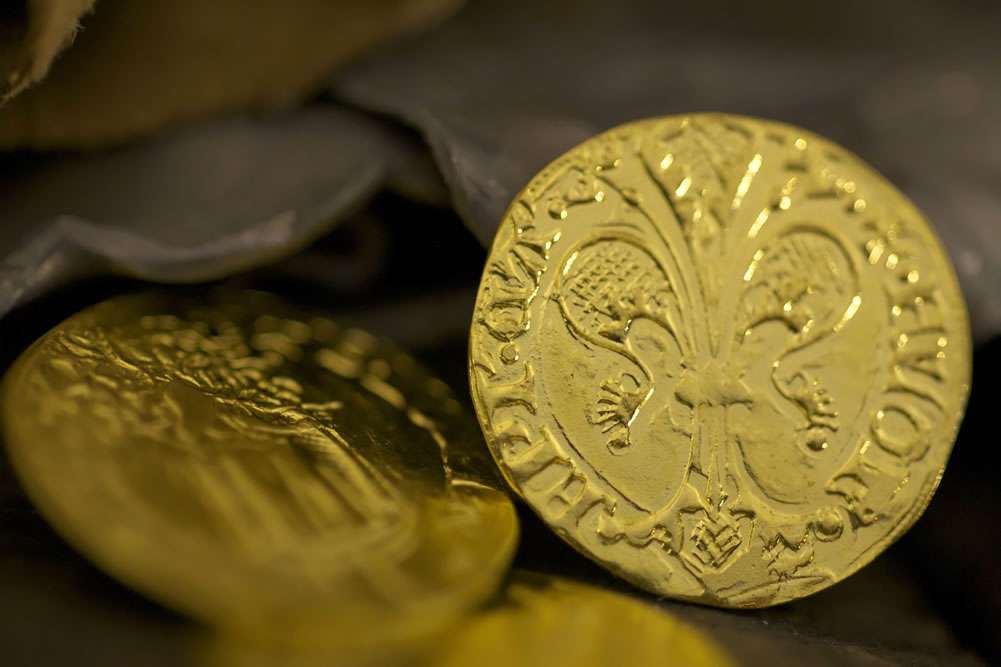
The ‘Bugnato’ Technique
The Bugnato technique is unique in its kind and it consists of an irregular surface created by using files of various grain sizes, then finished with hammering and with the use of special cutters and chisels. The inspiration comes from the façades of historical Florentine Places such as Palazzo Medici Riccardi and Palazzo Pitti.
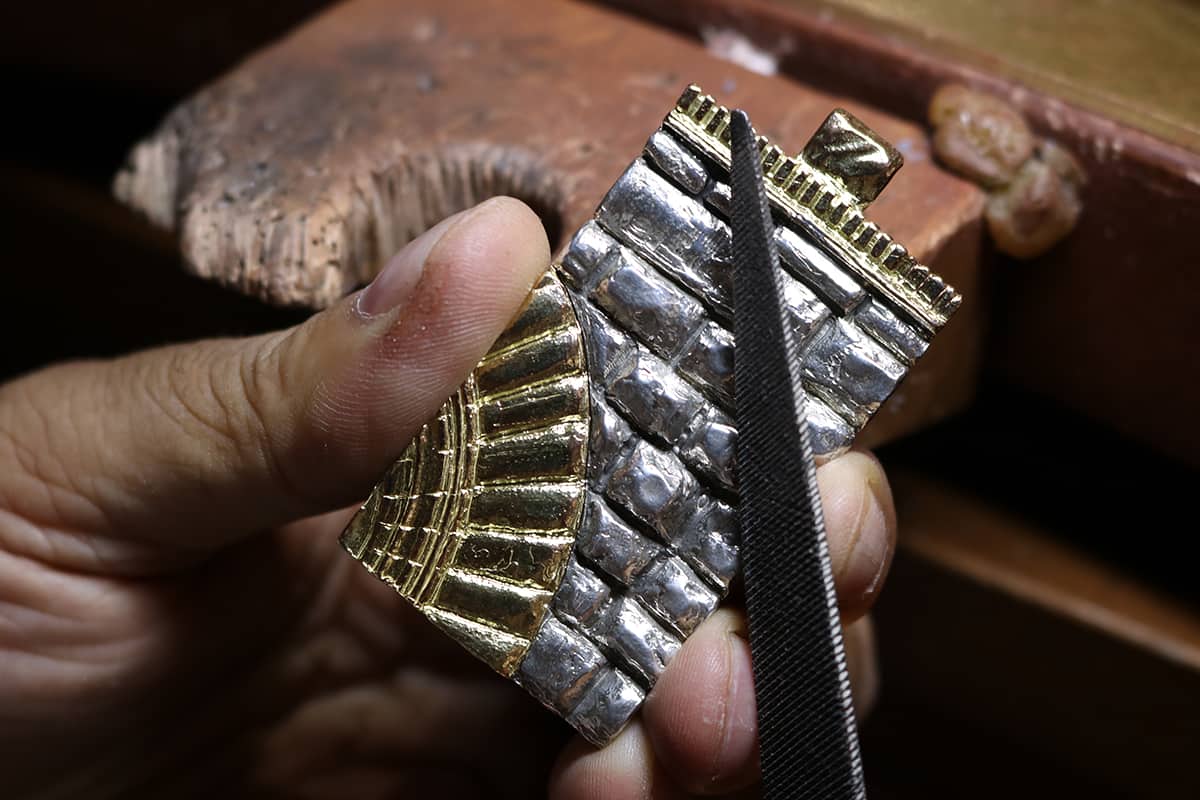
The art of “cuttlefish” casting of metal
The art of ‘’cuttlefish’’ casting of metal is an ancient technique. The model is pressed directly into the soft, spongy side of the two halves of a cuttlefish that has previously been cut in two equal parts and flattened. After scouring the entrance channels for the molten metal, the two parts of the cuttlefish are fitted perfectly aligned and tied together. The metal poured inside thus takes on the previously created pattern.
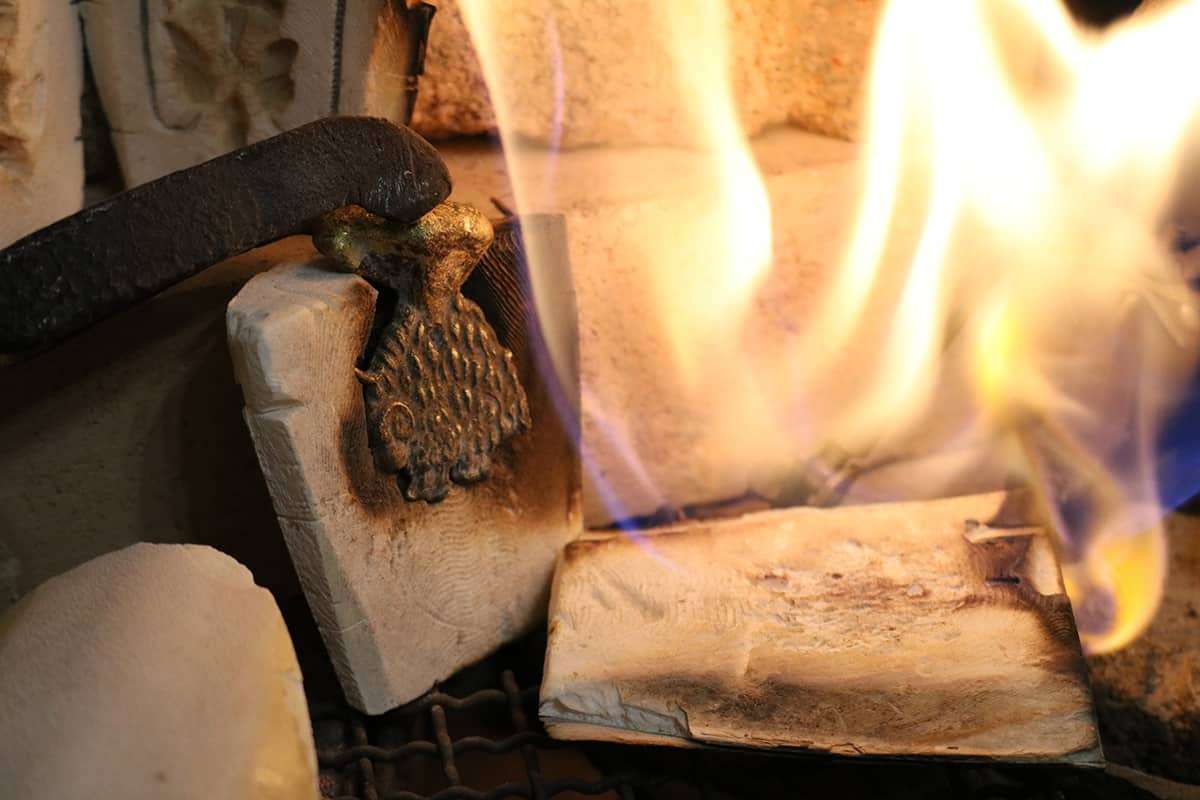
The innovative ‘Penkato’ technique
The innovative ‘Penkato’ technique was created by Paolo in 2008. Penko came up with an innovative and exclusive treatment for the surfaces of precious metals, that he called ‘Penkato’. The name stems from the combination of his surname and the typical ‘bugnato’ (rusticated) features of Florentine palazzos.
Paolo, with the help of a diamond drill, chisel, and burin engraving tool, is able to develop a 3D engraving effect.

The Papal Bull!
In the Papal Bull of 1569, Pope Pius V appointed Cosimo 1 de’ Medici Grand Duke of Tuscany.
Master goldsmith Paolo Penko, after painstaking studies of written and iconographic sources, has created two works that are unique. They are not reproductions as the originals do not exist. They are expertly made creations made on the basis of complex philological research and thanks to extremely high technical skill.
The Grand Ducal Crown
The Grand Ducal Crown is a precious example of goldsmith’s art. It is a reproduction of the design found in the Papal Bull of Pius V of 24 August 1569, kept in the State Archives in Florence. It has 19 points, alternating silver, and gold with stones and decorative elements.
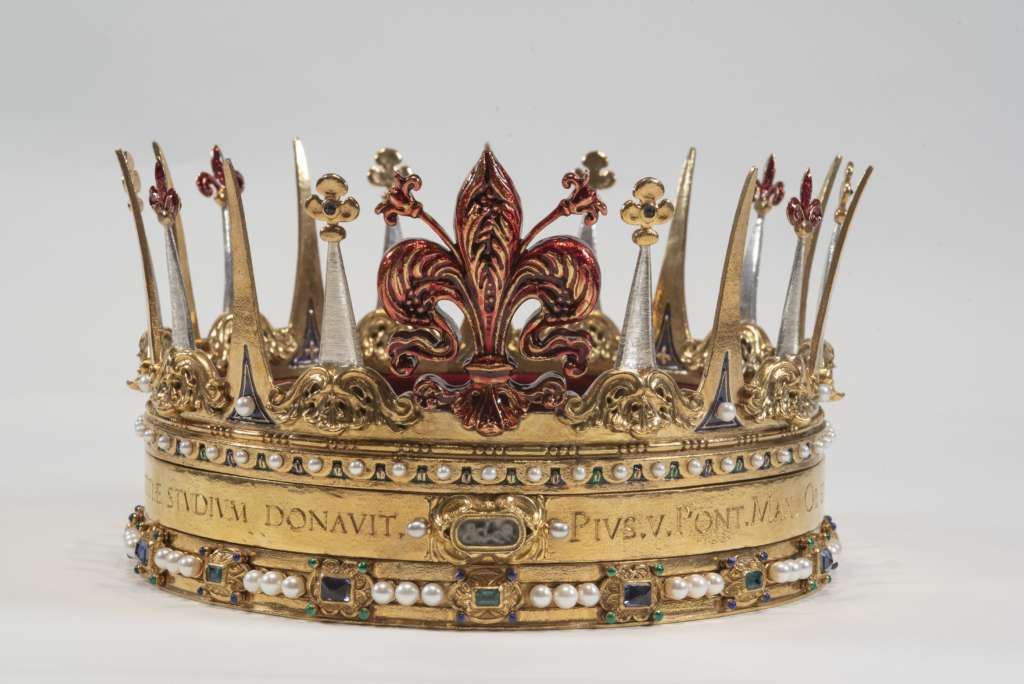
The Grand Ducal Scepter
The Grand Ducal Scepter was executed in conformity with the large painting on blackboard by Jacopo Ligozzi (c. 1590), depicting Cosimo’s Grand Ducal coronation in Rome in March 1570, and with portraits of Cosimo as Grand Duke, such as the paintings by Giovan Battista Naldini (Uffizi Galleries, 1585) and Ludovico Cardi known as Cigoli (Palazzo Medici Riccardi, 1603).
A Crown for the Marzocco Lion
A Crown for the Marzocco Lion, which is a stone statue in Piazza della Signoria in Florence was according to tradition placed on its head for the San Giovanni patron saint celebration.
Paolo Penko decided to recreate that crown.
The Marzocco Crown was realized by Alessandro e Riccardo Penko assisted by their father Paolo. It is made of gilded brass and decorated with “penkato” technique; surrounded by five big chiseled and enameled red Florentine lilies each one embellished with a red crystal and pearls.
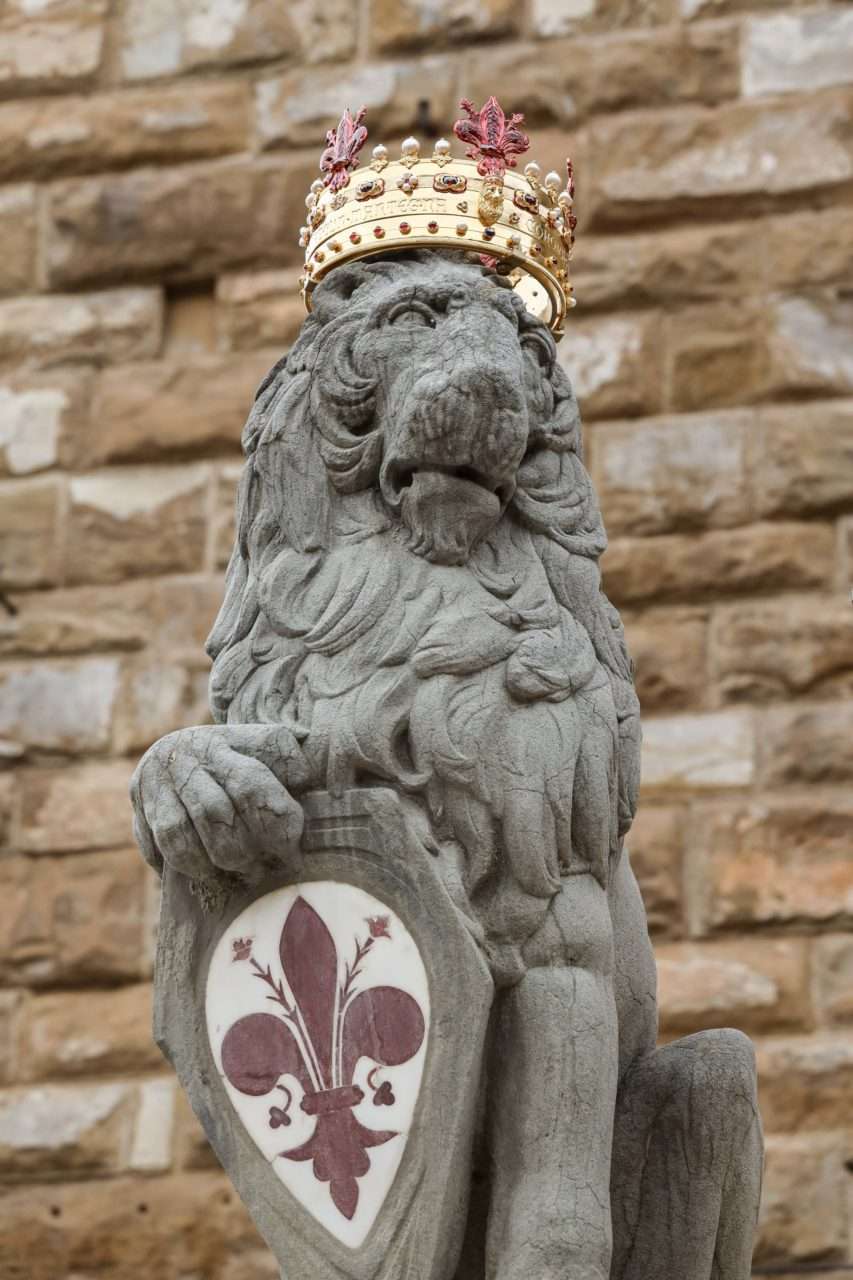
The stunning crown is engraved with the motto:
“Corona porto per la patria degna acciocchè libertà ciascun mantegna” (I wear the crown for my worthy homeland, so that everyone can be free”
A Silver Medal and a Ring for Dante’s 700 years celebrations
The Association Confartigianato in Florence promoted an artistic installation at the foot of the Visdomini Tower, one of the medieval city towers cited by Dante in Paradise-Canto XVI, and which is right at the entrance of Paolo Penko’s workshop by the Duomo.
The occasion is the Celebrations for 700 years from Dante’s death (1321 – 2021). The inspiration came from the verses “Se tu segui tua stella….’’, (Inferno XV, 55-56), (If you follow your own star, you cannot fail….)
The installation consists of a stone plaque on a bust of Dante and a celebratory medal applied to the work.
These verses lend themselves to two interpretations: the first reflects Brunetto Latini’s position that fame is the goal to be reached at any cost, keeping one’s gaze straight ahead and relying on one’s abilities. The second is astrological in nature, it is Fate that prevails and the stars thus guide our existence.
Dante Alighieri ring
The Silver signet ring is made using the lost wax casting technique and engraved with a burin according to the ancient Florentine goldsmith’s tradition. The engraved coat of arms reproduces that of Dante Alighieri’s family.
The incredible story of “Il Fiorentino”, a 138-carat diamond
“A thin snake all studded with small diamonds, which with its branches supports the said Diamond in the air”.
“Il Fiorentino”, a citrine yellow diamond of exceptional size, was the second gem in the world in the seventeenth century, after the one owned by the Mughal emperor. Purchased in 1601 by Ferdinando I de ‘Medici, who bought it from the Portuguese Don Ludovico Castro, Count of Montesanto, it was still unfinished by the cutter Pompeo Studendoli, a Venetian craftsman living in Florence, who worked it until 1615.
The result was a splendid jewel almond-shaped, with a double rose cut of nine sides and 127 facets, which was then inserted into an equally gorgeous pendant setting. A luxury artifact that remained in the hands of the Medici until the passage of Tuscany to the Lorraine, when it was brought to Vienna, where it appears until the early twentieth century. In 1918, with the collapse of the Habsburg Empire, the crown jewels of Austria set out for exile in Switzerland: the “Florentine” also left with them, and, since then, their traces have been lost.
The reproduction of the Medici jewel, made in cubic zirconia was made by the goldsmith’s workshop of Paolo Penko. Thanks to careful iconographic research and ancient techniques, Penko has recreated, for the first time in the world, the precious serpentine frame with which Mary Magdalene of Austria used to show off the diamond. The snake was made with the cuttlebone casting technique, perfectly modeled to accommodate the Florentine reproduction in cubic zirconia. The setting has been embellished with the same number of diamonds as the original, 182 old-cut rosette stones, set with small fragments of silver leaf.

”Il Fiorentino”
The first “Orchestra Set” ever created for a conductor: Beatrice Venezi
It is the first jeweled conductor’s baton to be custom-made by a master goldsmith. It was made for the conductor Beatrice Venezi on the occasion of the launch event of “Musica in Giro”, scheduled for Saturday 1 August 2020 behind closed doors at the Teatro Verdi in Florence.
Beatrice Venezi is one of the few women in the world to conduct orchestras at an international level.
The baton (weighing 35 grams and 35 centimeters long) has a handmade silver handle, the surface of which is embellished with the penkato technique. The handle is made up of two parts, the lower one recalling Brunelleschi’s dome of the Florence Cathedral with its eight segments.

The presbytery of the Cathedral of Santa Maria del Fiore and the dome above it repeat the octagonal plan of the Baptistery, a symbol of resurrection and eternity according to Christian tradition.
The upper part of the baton is inspired by the stars and is represented by fourteen sapphires! The number 14 in numerology signifies harmony and balance.’Two times seven’ also represents the musical notes that harmonize to compose music.
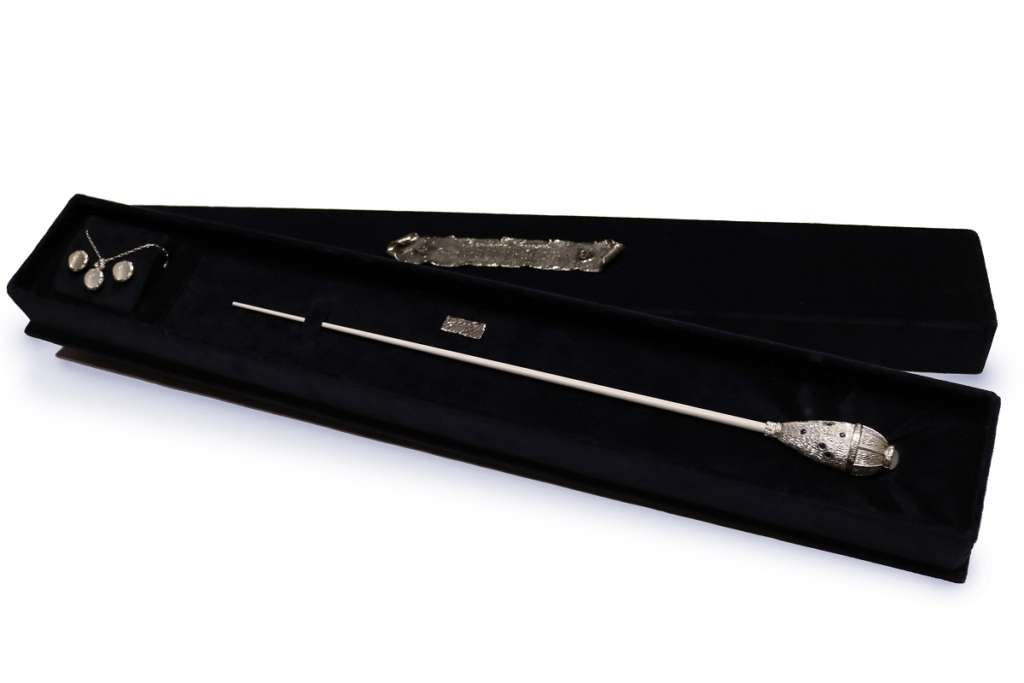
Conclusion
If you ever come to Florence you must check out his store at Via delle Oche 20r . He has made creations for the Pope as well as Madonna (the singer). Considering the work that goes into his jewels the prices are very competitive. I would say he has something for every pocket!
Check out Paolo Penko
Check out another great Florentine artisan Alessandro Dari
 Jewellery Reflections jewelry buying and information blog
Jewellery Reflections jewelry buying and information blog

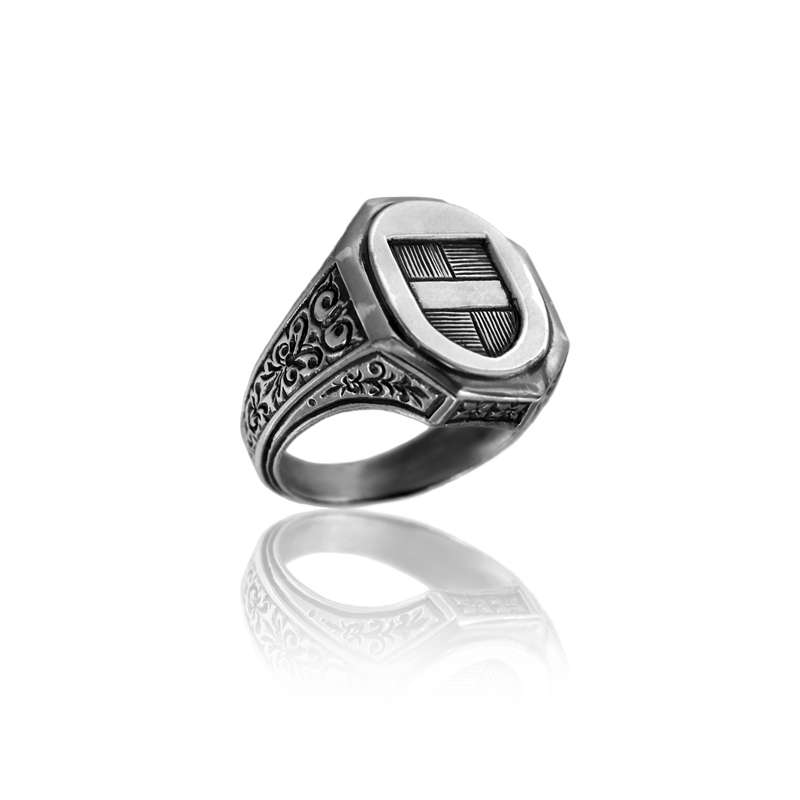

One comment
Pingback: Alessandro Dari: A Florentine Alchemist and Goldsmith